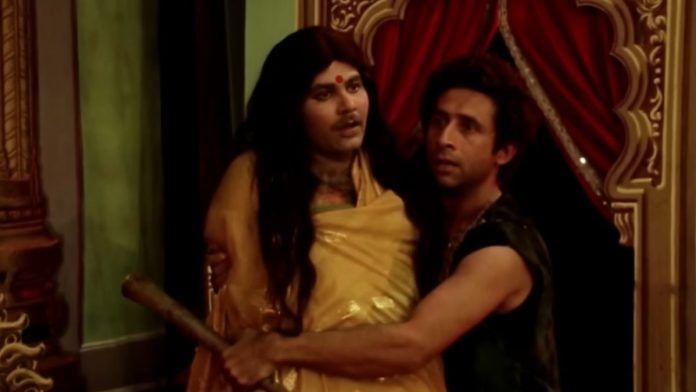Few films in Indian cinema have achieved the rare combination of timeless laughter and relevance. And 1983 film Jaane Bhi Do Yaaro, directed by Kundan Shah, is one such example. It begins as a modest black comedy and ends up as a mirror to India’s moral collapse.
Four decades later, the film remains one of the sharpest satires ever made on corruption, bureaucracy, and the absurd theatre of public life.
Jaane Bhi Do Yaaro stars Naseeruddin Shah, Om Puri, Satish Kaushik, Pankaj Kapur, and Neena Gupta. And among these fine actors, it’s Satish Shah’s character D’Mello MacArthur that stands out for originality and unforgettable comic timing—the dead body which, ironically, is the life of the film.
Satish Shah died on 25 October after suffering a sudden cardiac arrest. He was 74. Among his multiple iconic performances on the big screen, Jaane Bhi Do Yaaro has a special place.
“Ever since I saw him in Jaane Bhi Do Yaaro, I became his fan,” said actor and director JD Majethia. “We have many brilliant actors, but no one could play a dead body quite like him. It was simply outstanding.”
Majethia has also directed Sarabhai vs Sarabhai.
Satish Shah plays dead, yet acts
Jaane Bhi Do Yaaro tells the story of two photographers, Vinod Chopra (Naseeruddin Shah) and Sudhir Mishra (Ravi Baswani), who open a photo studio in Mumbai. They dream of making it big through honesty and talent. But soon, they find themselves on a corruption skewer with builders, bureaucrats, and journalists.
When they stumble upon photographic proof of a murder, they decide to expose the truth, only to realise that in a corrupt system, truth is the first casualty.
The film is filled with misunderstandings, mistaken identities, and slapstick humour. Every laugh, however, lands with an undertone of despair.
Satish Shah’s character D’Mello MacArthur, a corrupt Municipal Commissioner, is introduced as a pompous, slightly sleazy government officer who has a price for everything. But the brilliance of his role emerges after his character dies.
D’Mello’s death sets off a riotous sequence in the film. Vinod and Sudhir trying to get rid of his corpse is simply madness. Very few films have been able to do justice to dark humour the way this four-decade-old film does.
There’s something profoundly funny, at the same time tragic, about D’Mello’s dead body being used as a literal prop. Shah’s performance as a dead man required tremendous physical control and comic discipline. The way his limp body is dragged and hidden, in absurd situations, becomes a running joke that never loses its punch.
It’s not easy to describe what Shah achieved in the scenes without moving. He acts through the stillness of death.
D’Mello’s corpse speaks loudly about the death of morality and conscience in society.
Also read: ‘King’ first look is here. Shah Rukh Khan is owning his 60
An iconic climax
The climax of Jaane Bhi Do Yaaro is arguably the most iconic sequence in the film, and in Indian comedy history.
It is a stage performance of the Mahabharata, where both Vinod and Sudhir decide to expose the murder on stage. What follows is a riot of confusion, as characters from the modern-day plot and the mythological play collide in a madcap performance.
As the lifeless body keeps getting dragged, dropped, and revived, the audience in the play laughs, unaware that a real crime is being revealed in front of them.
The scene doesn’t end in triumph, and that’s what makes it realistic. The truth-tellers are jailed while the corrupt go free.
“No one knew what was being made, honestly,” Vidhu Vinod Chopra told The Indian Express in a conversation. Chopra was the production controller on the film, who also played the role of Dushasan in the climax.
The filmmaker had revealed that he played the role to save Rs 2000, as the actor they had shortlisted wanted the advance payment.
Though Jaane Bhi Do Yaaro didn’t get commercial success, it went on to achieve a cult classic tag. The film is more than just a comic watch; it is a masterclass in political satire.
(Edited by Prasanna Bachchhav)






